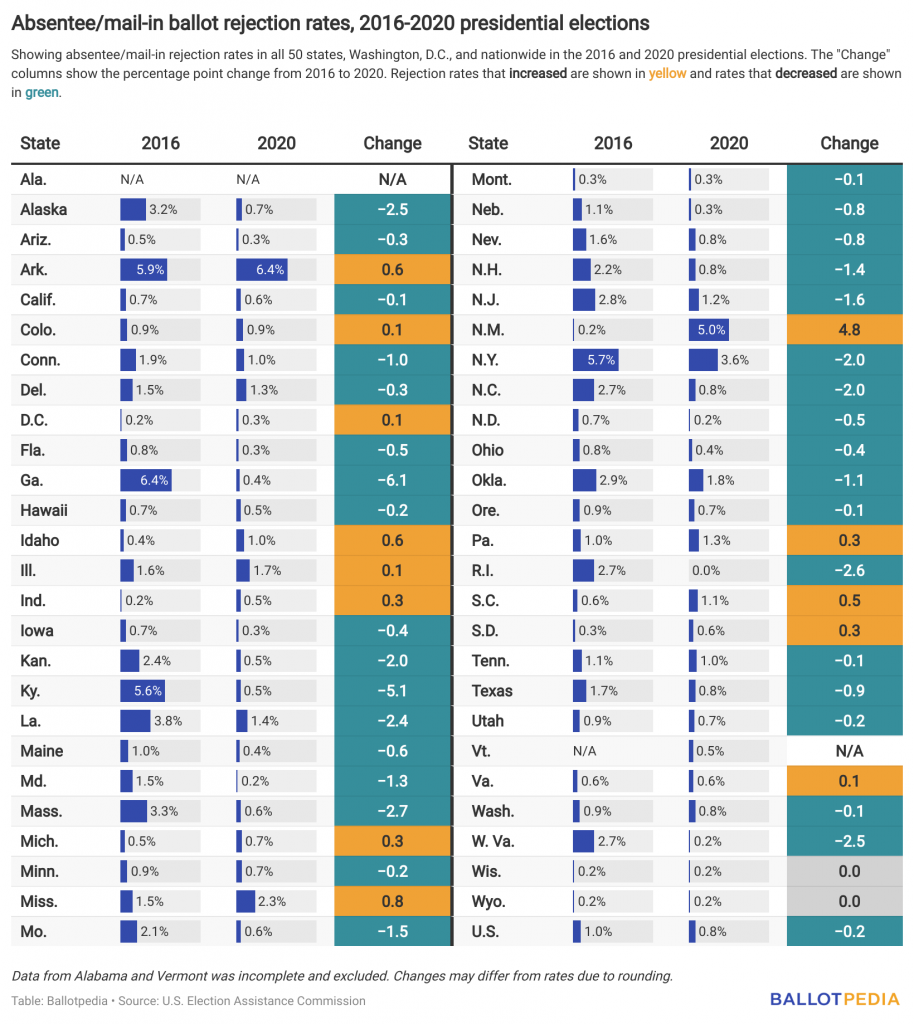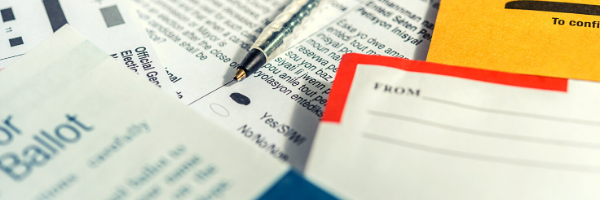In the 2020 general election, voters cast 70.6 million absentee/mail-in ballots, and election officials rejected 0.8% of them, according to data released by the U.S. Election Assistance Commission (EAC). The number of absentee/mail-in ballots cast in 2020 marked a 111% increase over 2016. And by comparison, absentee mail-in ballot rejection rates in 2018 and 2016 were 1.4% and 1.0%, respectively.

Absentee/mail-in ballot rejection rates decreased in 34 states between the 2016 and 2020 elections, increased in 12 states and Washington, D.C., and remained unchanged in two states.
New Mexico had the largest increase in its absentee/mail-in ballot rejection rate, with the state rejecting 0.2% of absentee/mail-in ballots in 2016 compared to 5.0% in 2020, a 4.8 percentage point increase. No other state had an increase larger than one percentage point.
Georgia saw the largest decrease in its rejection rate. In 2016, the state rejected 6.4% of absentee/mail-in ballots, decreasing to 0.4% in 2020. However, the EAC commented in its report that figures for Georgia may not necessarily include all rejected ballots. Kentucky had the second-largest decrease, dropping from 5.6% in 2016 to 0.5% in 2020.

Election officials may reject absentee/mail-in ballots for a number of reasons, ranging from a missed deadline to the use of an incorrect return envelope. The exact criteria for rejecting a ballot varies from state to state.
The most common reason for a rejected ballot in 2020 was when the signature on the ballot did not match the signature on file. According to the EAC, 32.8% of all rejected ballots were discarded for this reason. A non-matching signature was also the most common reason for rejection in 2016, accounting for 27.5% of rejections that year.
The EAC publishes its biennial Election Administration and Voting Survey in the odd year after every federal election. The EAC compiles its report based on information submitted to it by state election officials.


